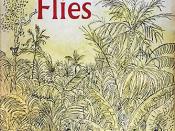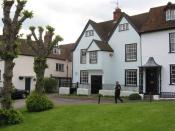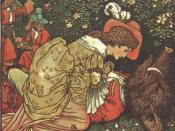In William Golding's novel, "Lord of the Flies", many themes are present. However, there is one central message supported by his use of symbols. Savagery isn't a quality that humans naturally act upon - it's buried deep inside them mentally, and has the potential to surface if certain situations arise. Three symbols that cause this savagery are war paint, the beast, and the fire.
When Jack puts on the war paint, he loses his identity as a human and becomes one with nature. This brings out his savage nature. "â¦And the mask was a thing on its own, behind which Jack hid, liberated from shame and self-consciousness." (page 64) With the war paint, Jack feels less human. The paint also makes him feel violent and a bit crazy. "He began to dance and his laughter became a bloodthirsty snarling." (page 64) His anonymity takes away his values and makes him less civilized.
This means that when he kills the pig, he is able to do it without feeling any mercy or regret.
The children on the island can kill other things, too, without mercy or regret. The beast, or rather the fear of the beast, is the thing that causes the worst case of uncivilization in the book, and leads to yet another death. When Simon was walking back towards the camp, everyone mistook him for the beast and starting beating him. "The sticks fell and the mouth of the new circle crunched and screamed. The beast was on its knees in the center, its arms folded over its face." (page 152) They were acting like crude savages, a nature that was driven by their fear of the beast, not even realizing that what they thought was the beast was actually Simon. They're also so afraid of the beast...



Symbolism in Lord of the Flies, a Novel by William Golding
Well, for a two-page review of the novel, this is not bad. However, virtually everything in "Lord of the Flies" is symbolic, so that this is really rather preliminary coverage. I wish there were a good deal more here.
1 out of 2 people found this comment useful.